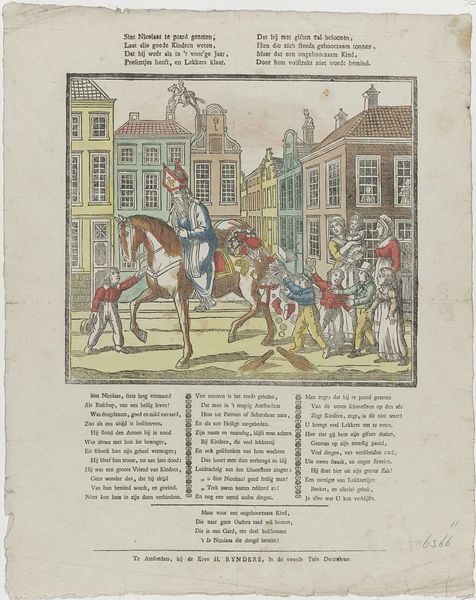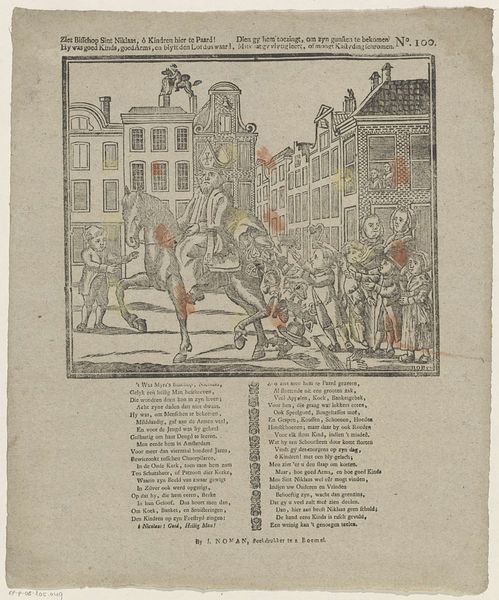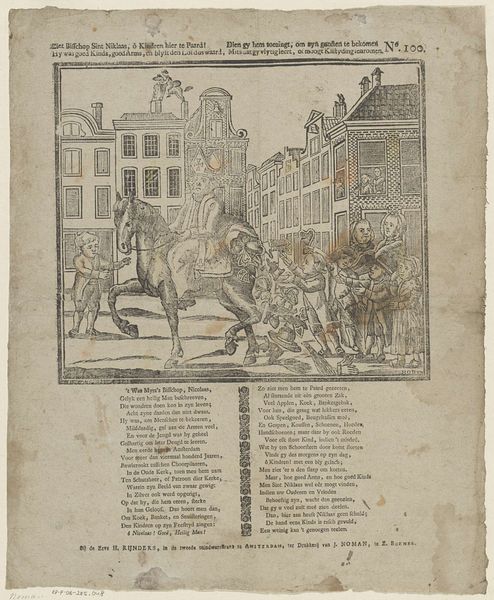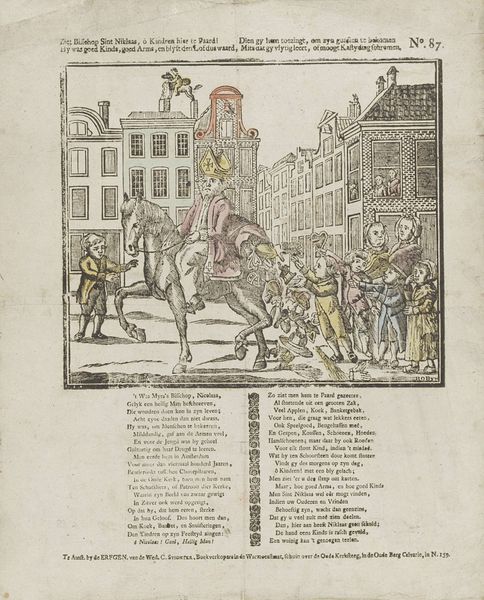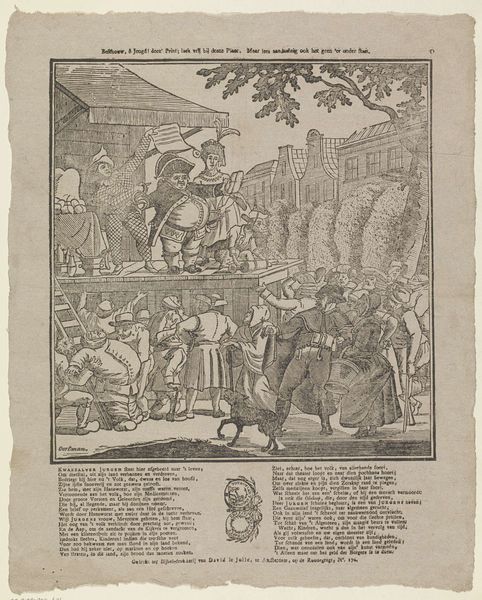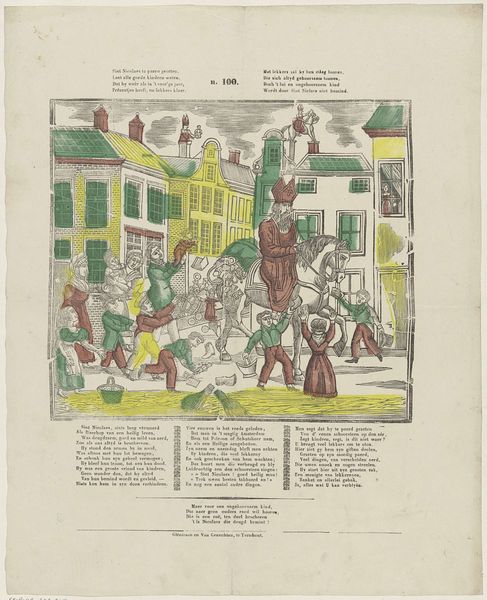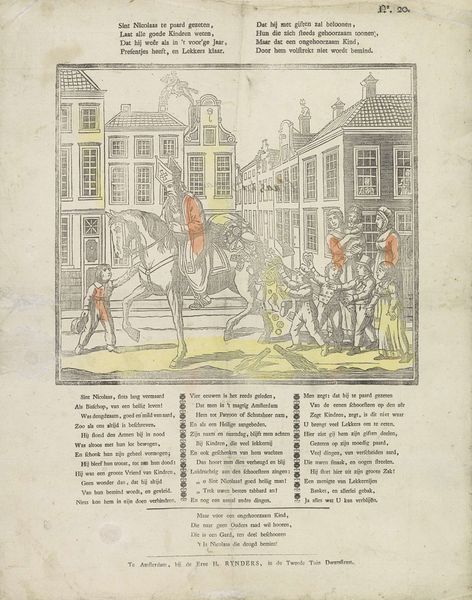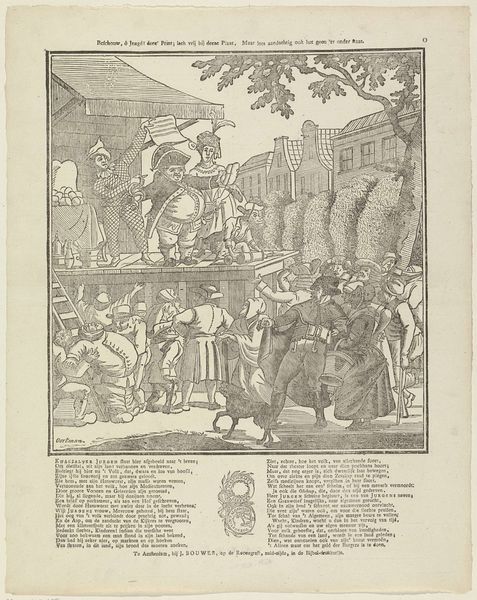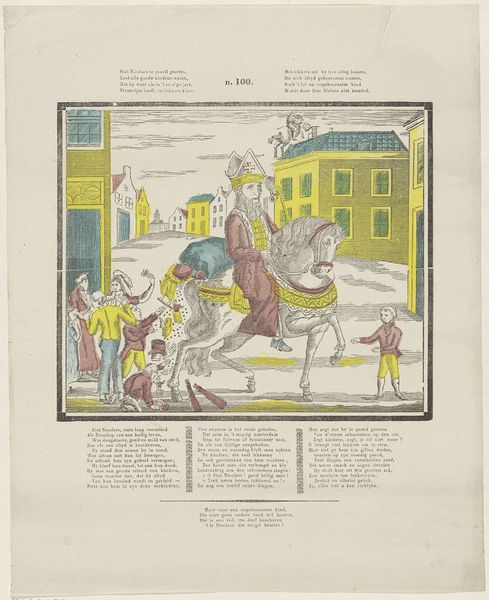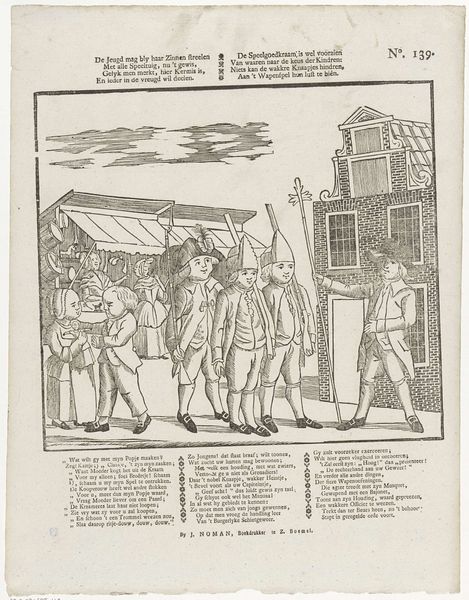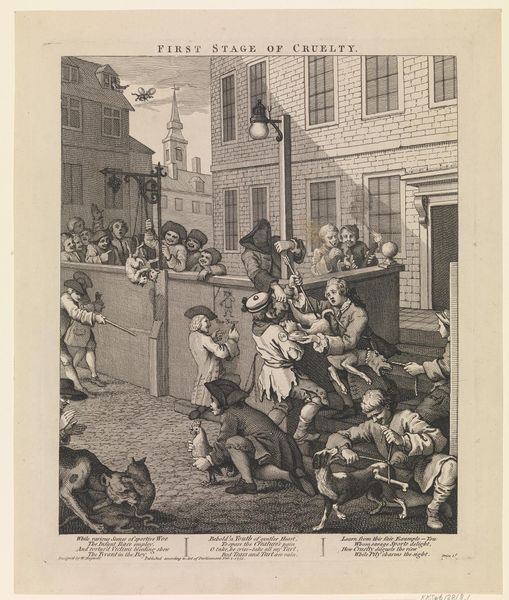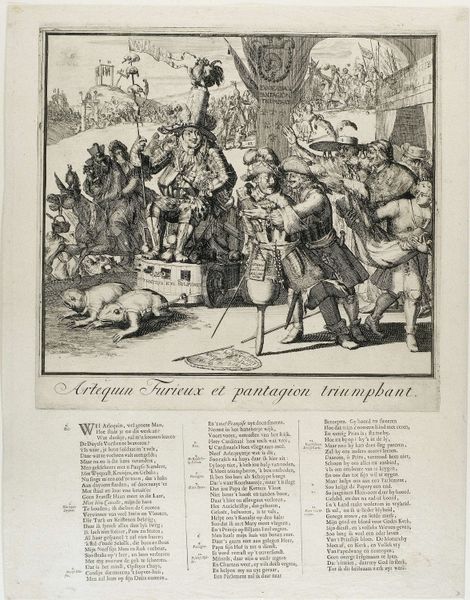
Ziet bisschop Sint Niklaas, ô kindren hier te paard! / Hy was goed kinds, goed arms, en blyft den lof dus waard, / Die gy hem toezingt, om zyn gunsten te bekomen / Mits dat gy vlytig leert, of moogt kastyding schromen 1806 - 1830
0:00
0:00
arobyn
Rijksmuseum
print, etching
#
narrative-art
#
comic strip
# print
#
etching
#
figuration
#
folk-art
#
cityscape
#
genre-painting
Dimensions: height 382 mm, width 334 mm
Copyright: Rijks Museum: Open Domain
Editor: This is quite a fascinating print. It's called "Ziet bisschop Sint Niklaas, ô kindren hier te paard!" by A. Robyn, dating back to the early 19th century. It’s an etching, so the lines are very precise. The scene is so lively! I see Saint Nicholas on horseback surrounded by children in what seems to be a cityscape. It’s rather busy, wouldn’t you agree? How do you interpret this work, considering its visual structure? Curator: Indeed, the composition is rather complex. Notice the strong diagonal created by the horse and St. Nicholas, drawing the eye from the left foreground towards the crowded figures on the right. The artist’s choice of line and form are interesting, consider how the etching technique renders the texture of clothing and architecture. The limited color palette directs our attention to certain areas, creating emphasis through contrast. Note, for instance, the buildings; are they idealized forms or fairly true depictions of period architecture? Editor: I hadn't thought about the diagonal like that! And yes, the buildings look quite realistic to me, rather than imagined. It feels almost like a snapshot, despite being an etching. What would you say the artist intended? Curator: Intentions can be difficult to ascertain with certainty. We are only certain of the artwork and the image, and our knowledge of how composition is employed to organize visual information. Think about how the artist arranges these shapes to create certain tensions and direct visual energy to focal point. Can we find examples where formal features directly influence interpretation? Editor: That’s a great point. So, the way Robyn used lines, colors, and the cityscape backdrop contributes to the meaning we derive from this piece, independent of the narrative being depicted. Curator: Precisely. That the work communicates through these elements, with forms that reflect function as much as appearance. Editor: This way of thinking definitely gives me a new way to look at art. Thank you!
Comments
No comments
Be the first to comment and join the conversation on the ultimate creative platform.
